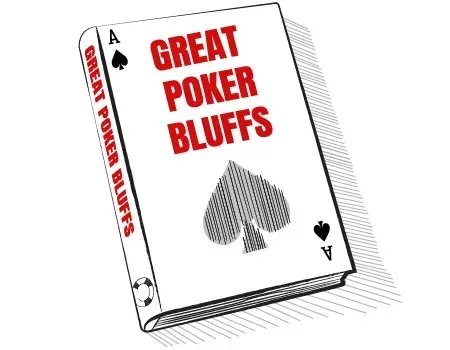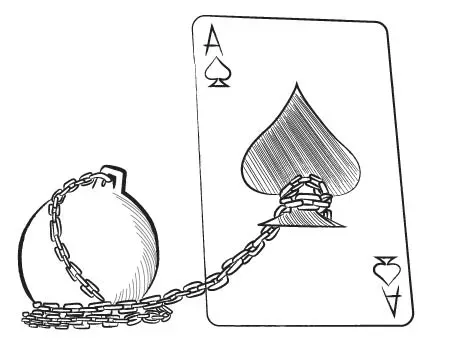BEST POKER BLUFFS OF ALL TIME
In this chapter, we’re going to take a look at some real, documented examples of the best poker bluffs of all time from live cash games and tournaments. We’ll also discuss why they were so effective.
With that, let’s begin our analysis of 2 examples of good bluffs.
Bluffing with Trips: Phil Ivey vs. David Benyamine vs. Patrik Antonius
- Action: On Million Dollar Cash Game, blinds are $300/$600 with a $100 ante. Seven recognisable poker pros are seated at the table. Starting with David Benyamine limping with Qd9d UTG, we ultimately get a family pot of limpers, including Phil Ivey in the CO with Kh7h and Patrik Antonius on the button with KsJh.
- The flop comes KdKc2d, giving Benyamine the 2nd nut flush draw and Ivey and Antonius both trips. Action checks to Ivey, who bets $3,000 into $4,900. Antonius and Benyamine, both call with everyone else folding in between. The turn brings the 4d, which now gives Benyamine the 2nd nut flush on the paired board. However, Benyamine checks. Ivey checks, as well. Antonius bets $10,000 into $13,900, and both players call. The river brings the 5d, bringing a 4-card straight to the board. Benyamine checks, Ivey bets $40,000 into $43,900. Antonius folds, and Benyamine then takes his time before ultimately folding what would’ve been the winning hand.
Why This Was One of the Best Poker Bluffs
- Great Storytelling: While his turn call is questionable (he’s almost most certainly behind), being
able to turn his hand into a bluff on the river after a great river card is spot on!
- Reading Your Opponents are Strong, but not “Nutty” Strong:
Ivey’s read of his opponents was spot on here. In an unraised pot,
what types of hands could his opponents have? Benyamine, UTG, would’ve likely raised AK, KQ or a suited Ace of Diamonds (instead of limping). Furthermore, Patrik Antonius’s hand range can’t be overly strong either because he’s overcalling 4 limpers before him while on the button.
hands could his opponents have? Benyamine, UTG, would’ve likely raised AK, KQ or a suited Ace of Diamonds (instead of limping). Furthermore, Patrik Antonius’s hand range can’t be overly strong either because he’s overcalling 4 limpers before him while on the button.
- Facing Opponents Who Can Fold Stronger Hands: Some weaker players love calling with hands that they shouldn’t. When reading your opponents as strong and trying to bluff them off those hands, it’s important to be facing opponents that are capable of folding big hands in the right situations.
- Bluffing into Multiple Opponents: While bluffing into multiple opponents is so rarely advisable, Ivey’s betting line and table position helped out in supporting his cause here. To support the fact that this bet of Ivey’s looks super value-based, you can even hear Benyamine say before folding, “There’s no bluff in this spot. I don’t see how you can possibly be bluffing.” Nice hand, Ivey!
Well-Timed Aggression Takes the Multi-Way Pot (Again!):
Tom Dwan vs. Barry Greenstein vs. Peter Eastgate
- Action: In a fullring cash game on High Stakes Poker, the blinds are $400/$800 with a $200 ante. Greenstein picks up AcAh UTG and raises to $2,500. Remarkably, every single other player calls the raise to see a flop, including aggressive Pro, Tom Dwan, in UTG+1 with QcTc and Peter Eastgate in the small blind with 4h2d. The flop comes 2c-Td-2s. Action checks to Greenstein, who cbets $10,000 into $21,600. Dwan in UTG+1 re-raises to $37,300. Action folds to Eastgate, who makes the call, as does Greenstein. With $133,500 in the pot on the turn, action checks to Dwan who cbets $104,200. Eastgate ends up folding, as does Greenstein.
Why This Was One of the Best Poker Bluffs:
- Dwan’s Loose Aggressive Image: Because of Dwan’s looser image, the hands that he could have in an UTG+1 are much looser than others would be. They could easily include suited (and maybe even some unsuited) hands with a 2 in them, which could beat an UTG overpair like AA. (TT or 77 would also make normal sense in Dwan’s range, too.)
-
Barry Greenstein’s Tight Image: Greenstein has a reputation for being known as a very tight player. As such, on a multiway paired board, Dwan likely knows that even if he does have an overpair (like AA) UTG, through unrelenting aggression on all three streets, he can probably end up taking the pot by getting Barry Greenstein to fold.
- Peter Eastgate’s Flatting Range: After 1 raiser and 6 callers preflop before the action gets to him in the small blind, Peter Eastgate is getting good enough odds to see a flop with almost any two cards. As such, while Dwan likely knows after the flop that Eastgate has at least a 2, there’s a strong possibility that it’s a weaker 2 (weaker 2nd card in the hand) because of the massively good odds he was getting preflop. This reasoning could cause Eastgate to fold the turn to another large barrel.
- Turn Bet in Position: Even against multiple players, the fact that Dwan pulls the bluff trigger again on the turn creates a very tricky situation for his out-of-position opponents. In addition to probably being able to size up their ranges pretty well (and anticipating that they can fold through relentless aggression), in facing a large turn bet, Dwan’s opponents have to think, “If I call this bet, what happens if Dwan then fires a $250,000 on the river?” Being in position certainly has its advantages, one of which is the ability to create a guessing game for your opponents by ramping up the pressure.
- Deep Stacks: Adding onto the last point, being deepstacked (in addition to having position when deepstacked) creates an expensive guessing game for your out-of-position opponents. If they guess wrong, it can be very costly for them, which can often lead them to take the safer, cheaper option of saying, “It’s not worth the risk.”
- Greenstein Is Capable of Folding Overpairs, if Necessary: Some players get married to Aces and will call all the way to showdown. As an experienced pro, Dwan knows Barry is likely capable of folding overpairs in the correct spots, and likely assesses this into the majority of Greenstein’s turn range due to his original UTG open and subsequent actions. He possibly assumes the same for Eastgate being able to fold weaker trips, of which he likely has.

|
- Continuing the Bluff in a Good Spot: While his flop raise puts him in a terrible spot, (1) having position on his remaining opponents and (2) getting a non-threatening 7 on the turn gives him great reason to continue bluffing. Sometimes, players can bluff your way out of a jam, but only in the correct situations. When they identify the right moment for it, then they just have to pull the trigger.
